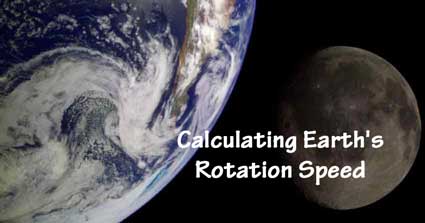Calculating Earth’s rotation speed
One challenge for mathematicians in calculating past time is finding the rate of the earth’s rotational decay. The earth is continuously slowing down from year to year, which averaged over five seconds a year over the last 2,000 years. The rotation speed decay results from many factors. Earth’s slowing can come from ocean tides, volcanic eruptions, earthquakes, and meteorite impacts.
Scientists have gone through star charts and events in the sky, such as eclipses, and adjusted this decay rate to match historical records. In doing this, mathematicians can calculate formulas that model the decay rate. The formula for this is known as the Delta-T calculation and gives us the ability to accurately calculate the earth’s rotation speed for any given time.
The determination of Delta-T, according to Fred Espenak and Jean Meeus stated in the NASA Scientific and Technical Information (STI) publication titled, “NASA/TP–2009–214174,” is calculated as stated: “Outside the period of observations (500 BCE to 2005 CE), the value of Delta-T can be extrapolated from measured values using the long-term mean parabolic trend: Delta-T = –20 + 32u2s, where u = (year – 1820)/100, and is defined as time measured in centuries.”[1]
This website uses this Delta-T for finding the eclipses and the phases of the moon. The primary reason for using this Delta-T formula is its wide acceptance as the gold standard for astronomical charts dating back thousands of years.
NASA used this Delta-T to develop a list of astronomical events listed in Fred Espenak and Jean Meeus NASA Scientific and Technical Information (STI) publication titled “NASA/TP–2009–214174.”
The calculated times within the mentioned NASA publication are given as the time of the greatest eclipse covering the earth and in the form of Universal Time. This website is only concerned with the eclipse viewers’ perspective and gives eclipse times in the viewer’s local time. Using local time versus universal time and individual perspective time versus greatest eclipse time results in different times for the event and, in one case, a different day. Even though there is a variation in time and potentially day, it is the same eclipse, just in different time measurements.
[1] NASA, Fred Espenak and Jean Meeus, Five Millennium Catalog of Solar Eclipses: -1999 to +3000 (2000 BC to 3000 CE) – Revised (NASA/TP-2009-214174), (NASA, JANUARY 2009), Page 12.



